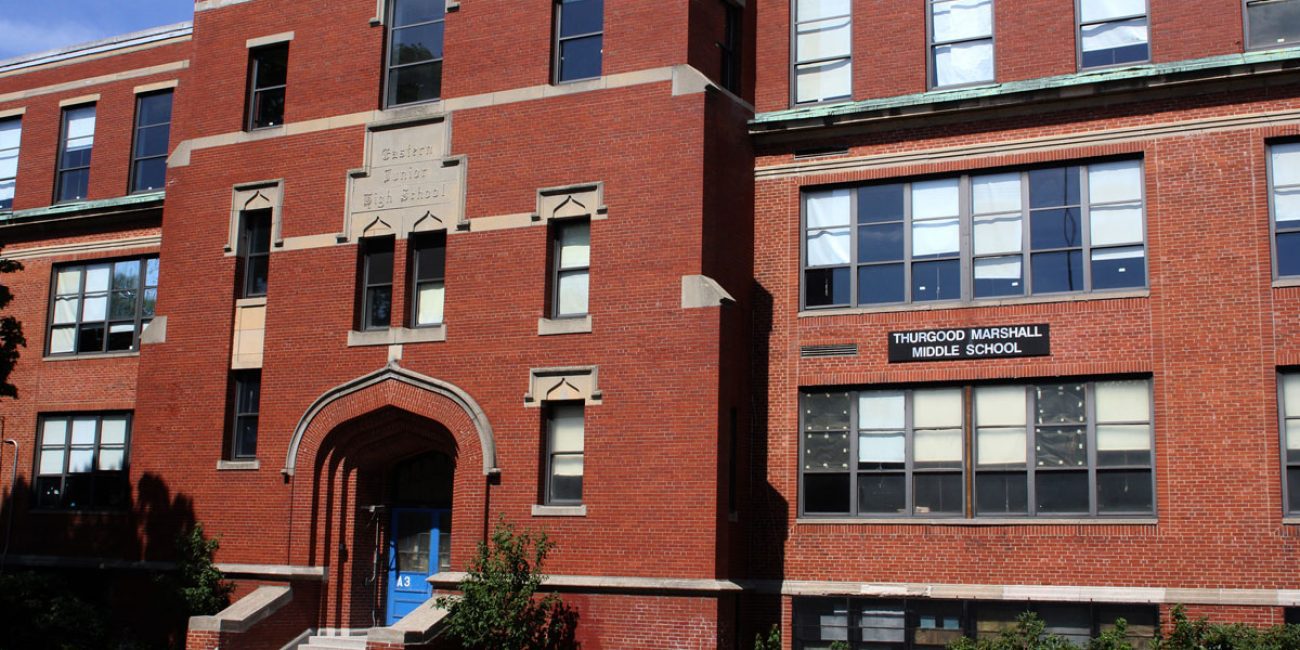LYNN — City officials will seek another extension on the sale of the former Thurgood Marshall Middle School with an eye toward soliciting plans to redevelop the property into affordable senior housing.
City Councilor Rick Starbard and Assistant City Solicitor James Lamanna plan to inform the School Committee that preliminary interest in the property from two potential developers has yielded proposals with purchase prices that are possibly much lower than the desired $4 million. They will request a four- to five-month extension as their six-month window to sell the property has almost expired.
“The School Committee was looking for $4 million,” said Michael Donovan, the city’s Inspectional Services Department chief. “That is obviously not a factor here.”
The School Committee has the final say on the sale of the former school building on Porter Street. Proceeds would go to the school department for capital needs, such as a future school or school repairs.
Three developers responded to a Request for Information (RFI) the city put out for the property. The process was meant to give officials a sense of what developers wanted to see in a Request for Proposals (RFP).
If the committee agrees to the extension, the RFP would go out next month, likely seeking a reuse for 55-plus senior housing, according to Lamanna. Throughout the process, officials have expressed a preference for a mix of affordable and market-rate housing.
Two nonprofits, B’nai B’rith Housing and East Boston Community Development Corporation (EBCDC) Inc., outlined their preliminary plans for the redevelopment of the property to the City Council’s RFP Committee earlier this week. Both expressed a preference for 55-plus senior housing.
A third group, the New Lynn Coalition, submitted a statement of interest, but the proposal was incomplete with no purchase price. The group was invited but did not show up, according to Lamanna.
Max Glikman, senior project manager for B’nai B’rith Housing, a Brighton nonprofit that builds affordable homes for seniors in Greater Boston, said their intention is to demolish the school and construct two buildings.
One building would house 60 units of affordable senior housing, while the other would hold 60 units of market-rate senior housing. The two-phase project would be expected to take four years.
In February, the City Council rejected a bid from B’nai B’rith, which would have replaced the 95-year-old building with 120 apartments — 70 market-rate and 50 affordable. Glikman said their response to the RFI reiterates their interest in the property.
Originally, Glikman said the nonprofit thought it would be able to partner with the city to build market-rate housing using a tax incentive plan, or the Housing Development Incentive Program (HDIP), but it’s become clear that was not an option, as the city was looking for real estate taxes to be paid on the property.
Because the group is losing the subsidy, Glikman said B’nai B’rith can only afford a purchase price of $500,000.
“The economics are just not there to do a $4 million acquisition,” he said.
As an alternative, Glikman proposed not demolishing the building and converting it to a family complex, with both affordable and market-rate housing.
Albert Caldarelli, president of EBCDC, proposed preserving the former school and converting it to 90 to 120 units of affordable senior housing, with at least 10 units of workforce housing. Under the plan, only the school’s addition would be demolished.
Their purchase price would be between $2 million and $4 million, depending on how much of a financial assistance package EBCDC would qualify for based on their plans for only affordable housing, according to Caldarelli.
With their plan, EBCDC, a nonprofit dedicated to enhancing the life of low-income residents of East Boston, wanted to preserve the building to stabilize the neighborhood and consider the city’s desire to not overburden the schools, according to Caldarelli.
Starbard said the city wants to see senior housing because with the overcrowding at schools, the area can’t accommodate a complex of families.
A potential developer planning to raze the building would incur the $2 million cost of demolition.

